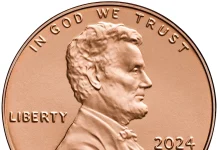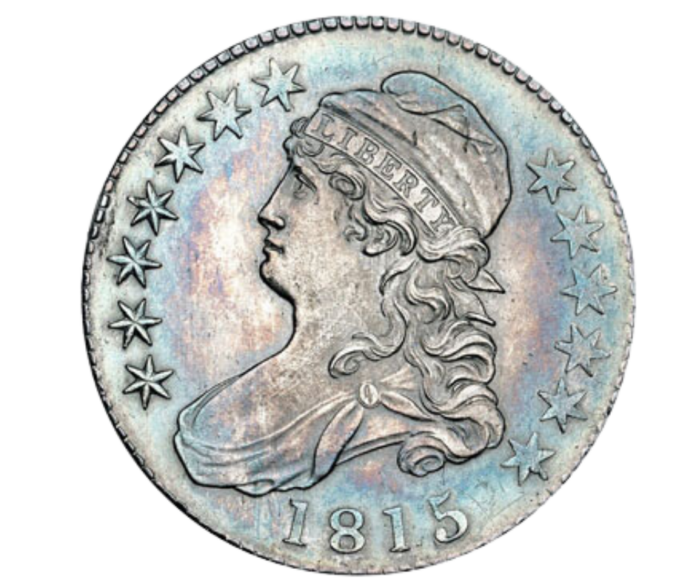
Wartime coin collecting can be a by-product of the times as wars frequently, but not always, produce numismatic items of interest to the general public and collectors alike.
In its brief independence following World War I and in the years since 1991, Ukraine has created an impressive body of collectible rare coin-related items. The bravery of the Ukrainians in the present struggle is bound to create a demand among worldwide collectors.
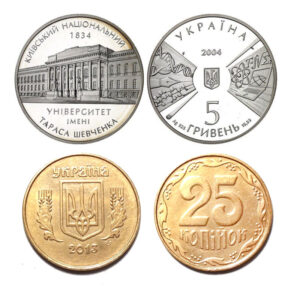
Russian & Ukrainian Rare Coins
Both Russia and Ukraine have a strong rare coin presence as there is a history in modern times of coin stores and auction houses specializing in coins and banknotes of the homeland. The Russians have a longer history of such interest but over the past 30 years, since independence was achieved, Ukraine has made its mark very well on the world coin stage.
A by-product of the current struggle is perhaps little known to most U.S. collectors.
The United States Mint strikes palladium bullion coins for investors but not all that much of the pale metal is mined in this country. The major producer of palladium is Russia and one wonders if metal from that country is finding its way into the American palladium coins.
For the United States, there are several wars that have produced numismatic items of interest: the Revolutionary War, War of 1812, Civil War, World War I and World War II.
The Revolutionary War and Banknote Collecting
No coins were issued by the Continental Congress or Confederation Government while the patriot armies were fighting the British, but there is a wealth of paper money. Not only did the national government print paper money but so did the colonies that had rebelled again the British.
The enterprising collector has a large assortment of paper money bills to choose from.
There is a wide variety of designs and denominations, with book values to fit the resources of most numismatists.
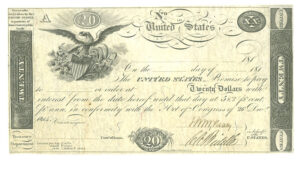
Coins Indirectly Related to the War of 1812
There is no coin directly connected with the War of 1812 but there are rare issues worth considering. Best known is the 1815 half dollar, of which fewer than 50,000 were struck in early January 1816. It has a value of $10,000 in About Uncirculated condition. There was also a coinage of quarter dollars dated 1815, struck in 1815 and 1816, but these are more easily obtained.
The other coin of importance is the 1815 half eagle or $5 gold piece.
It is rare and brings high prices at public auction. Its value in Almost Uncirculated is $200,000.
It is little known, but the first issue by the federal government of circulating paper money was made during this war. Such notes are rarely seen for sale but the enterprising collector can add a significant piece to a collection by obtaining one of these rare notes.
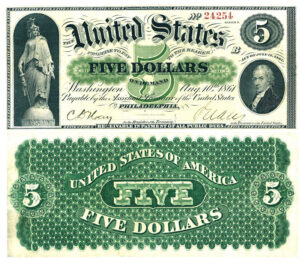
PHOTO COURTESY HERITAGE HA.COM
Rare Coins and Banknotes of the Civil War
The Civil war is a mother lode of collectible coins and banknotes. A large variety of paper money was issued by the Union and Confederate governments; these notes were also supplemented by bills circulated by various Confederate states, such as Georgia.
There is only one coin associated with the Confederate States, the famous 1861 half dollar struck at the New Orleans Mint, which had been seized by Confederate authorities. It carries the Confederate seal on the reverse. With only four made, it is an exceptional rarity.
On the Union side, there are numerous collectibles in addition to the banknotes. Proof coins were struck for collectors during the war but many of the dates for silver and gold coins were struck in low numbers and are difficult to find today.
One of the gold coins is rather special. By mistake, no regular circulation issues were made of the 1863 quarter eagle and only the thirty-proof specimens were made available to collectors.
Added to the above Union issues were three new coins, two-cent, three-cent and five-cent pieces.
The five-cent was not a new denomination but replaced the silver half dime with an alloy of copper and nickel. Such innovative coins created new collectors and considerable interest, especially in proof examples of these minor coins. Unlike gold and silver proofs, the cost was nominal for the minor coins and encouraged younger collectors to become more involved.
Scarce World War I Valuable Coins
Unlike the Civil War, World War I did not produce many important numismatic items, but nevertheless, it is a fertile field. Fighting in Europe had erupted in August 1914, and it was well-accepted that the war would eventually include America. In the spring of 1917, that came true when the United States declared war on the German Empire.
In 1916, however, the Woodrow Administration decided to send a message to the American public and the world at large. Silver coins were redesigned by eminent artists but it was the quarter dollar that stood out. It showed Liberty standing in a doorway ready to protect the United States. The half dollar was less overt, picturing a striding Liberty ready to defend the country.
Two of the coins struck just before the outbreak of war are important today; these are the 1916–D Mercury dime and the 1916 Standing Liberty quarter dollar.
The latter is the rarer of the two, but both are in strong demand by advanced collectors.
There are also two rather special coins from this period that are avidly sought. First is the doubled die 1916 nickel (value in About Uncirculated: $30,000) while the second is an overdate in the Standing Liberty quarter series: 1918/7–S (value in Almost Uncirculated: $10,000).
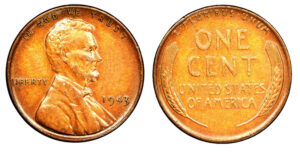
PHOTO COURTESY HERITAGE HA.COM
Coins and Banknotes of World War II
The second world war also brought its share of coins and banknotes.
Coinage was very heavy, as is usual in wartime, but there were two changes in alloy that were important.
The first was the nickel, normally composed of three-quarters copper and the rest nickel. The last metal is critical in wartime, however, and was dropped in favor of an alloy that contained silver and manganese along with the usual copper. These War-Time silver nickels were struck from the latter part of 1942 through the end of 1945.
Oddly enough, with nickel removed from the five-cent piece and copper remaining, the cent was robbed of its copper in 1943 for the war effort. The replacement was zinc-coated steel, which tended to corrode and look unsightly.
The cent and nickel from the war years each have an interesting piece to entice collectors. There is an overdated (1943/2) nickel that is scarce and has a value of $200 in Almost Uncirculated condition.
On the other hand, a few bronze planchets for the cent were used in 1943 and have proven to be extreme rarities; coin companies used to offer big premiums for such pieces to entice the younger generation into coin collecting.
Although often created in dire circumstances, war-time coins and banknote mementos are a vivid reminder of the horrors of war.
Perhaps in some small way, they will remind us of what ought to be and not what has been.
This article about the history of collecting wartime coins previously appeared in COINage magazine. To subscribe click here. Article by R.W. Julian.



